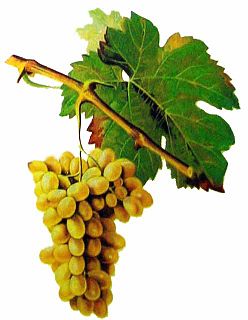Catharism was a Christian dualist or Gnostic movement between the 12th and 14th centuries which thrived in Southern Europe, particularly in northern Italy and southern France. Followers were described as Cathars and referred to themselves as Good Christians, and are now mainly remembered for a prolonged period of religious persecution by the Catholic Church, which did not recognize their unorthodox Christianity. Catharism arrived in Western Europe in the Languedoc region of France in the 11th century. The adherents were sometimes referred to as Albigensians, after the city Albi in southern France where the movement first took hold. The belief may have originated in the Byzantine Empire. Catharism was initially taught by ascetic leaders who set few guidelines and so some Catharist practices and beliefs varied by region and over time. The Catholic Church denounced its practices, including the consolamentum ritual by which Cathar individuals were baptised and raised to the status of "Perfect".

Languedoc is a former province of France. Its territory is now contained in the modern-day region of Occitanie in the south of France. Its capital city was Toulouse. It had an area of approximately 42,700 square kilometers.

Hérault is a department of the region of Occitania, Southern France. Named after the Hérault River, its prefecture is Montpellier. It had a population of 1,132,481 in 2016.

Languedoc-Roussillon is a former administrative region of France. On 1 January 2016, it joined with the region of Midi-Pyrénées to become Occitanie. It comprised five departments, and borders the other French regions of Provence-Alpes-Côte d'Azur, Rhône-Alpes, Auvergne, Midi-Pyrénées on the one side, and Spain, Andorra and the Mediterranean Sea on the other side. It was the southernmost region of mainland France.

Midi-Pyrénées is a former administrative region of France. Since 1 January 2016, it has been part of the new region Occitanie. It was the largest region of Metropolitan France by area, larger than the Netherlands or Denmark.

Emmanuel Bernard Le Roy Ladurie is a French historian whose work is mainly focused upon Languedoc in the Ancien Régime, particularly the history of the peasantry. One of the leading historians of France, Le Roy Ladurie has been called the "standard-bearer" of the third generation of the Annales school and the "rock star of the medievalists", noted for his work in social history.

Cinsaut or Cinsault is a red wine grape, whose heat tolerance and productivity make it important in Languedoc-Roussillon and the former French colonies of Algeria, Lebanon and Morocco. It is often blended with grapes such as Grenache and Carignan to add softness and bouquet.
Robert Navarro is a French politician and French Senator representing Hérault. He is a member of the Socialist Party (PS), which is part of the Party of European Socialists.
Paul Languedoc is an American audio engineer and luthier who is most closely associated with the rock band Phish.

Ganges is a commune in the Hérault department in Occitanie in southern France.

Clairette blanche is a white wine grape variety most widely grown in the wine regions of Provence, Rhône and Languedoc in France. At the end of the 1990s, there were 3,000 hectares of Clairette blanche grown in France, although volumes are decreasing.

Languedoc-Roussillon wine, including the vin de pays labeled Vin de Pays d'Oc, is produced in southern France. While "Languedoc" can refer to a specific historic region of France and Northern Catalonia, usage since the 20th century has primarily referred to the northern part of the Languedoc-Roussillon région of France, an area which spans the Mediterranean coastline from the French border with Spain to the region of Provence. The area has around 700,000 acres (2,800 km2) under vines and is the single biggest wine-producing region in the world, being responsible for more than a third of France's total wine production. In 2001, the region produced more wine than the United States.

The Languedoc was a 80-gun ship of the line of the French Navy and flagship of Admiral d'Estaing. She was offered to King Louis XV by the Languedoc, as part of the Don des vaisseaux, a national effort to rebuild the navy after the Seven Years' War. She was designed by the naval architect Joseph Coulomb, and funded by a don des vaisseaux donation from the Estates of Languedoc.
France Jamet is a French politician and a member of National Front.

The 1952 Air France SNCASE Languedoc crash occurred on 3 March 1952 when a SNCASE SE.161/P7 Languedoc aircraft of Air France crashed on take-off from Nice Airport for Le Bourget Airport, Paris, killing all 38 people on board. The cause of the accident was that the aileron controls had jammed, which in itself was contributed to by a design fault. The accident was the third-deadliest in France at the time and is the deadliest involving the SNCASE Languedoc.

Occitanie, Occitany or Occitania, is the southernmost administrative region of metropolitan France excluding Corsica, created on 1 January 2016 from the former regions of Languedoc-Roussillon and Midi-Pyrénées. The Council of State approved Occitanie as the new name of the region on 28 September 2016, coming into effect on 30 September 2016.
Languedoc-Roussillon Universities is the association of universities and higher education institutions (ComUE) for institutions of higher education and research in the French regions of Languedoc-Roussillon.
Languedoc is a former province of France.

TER Occitanie or liO TER Occitanie is the regional rail network serving the region of Occitanie, southern France. It is operated by the French national railway company SNCF. It was formed in 2017 from the previous TER networks TER Languedoc-Roussillon and TER Midi-Pyrénées, after the respective regions were merged.















